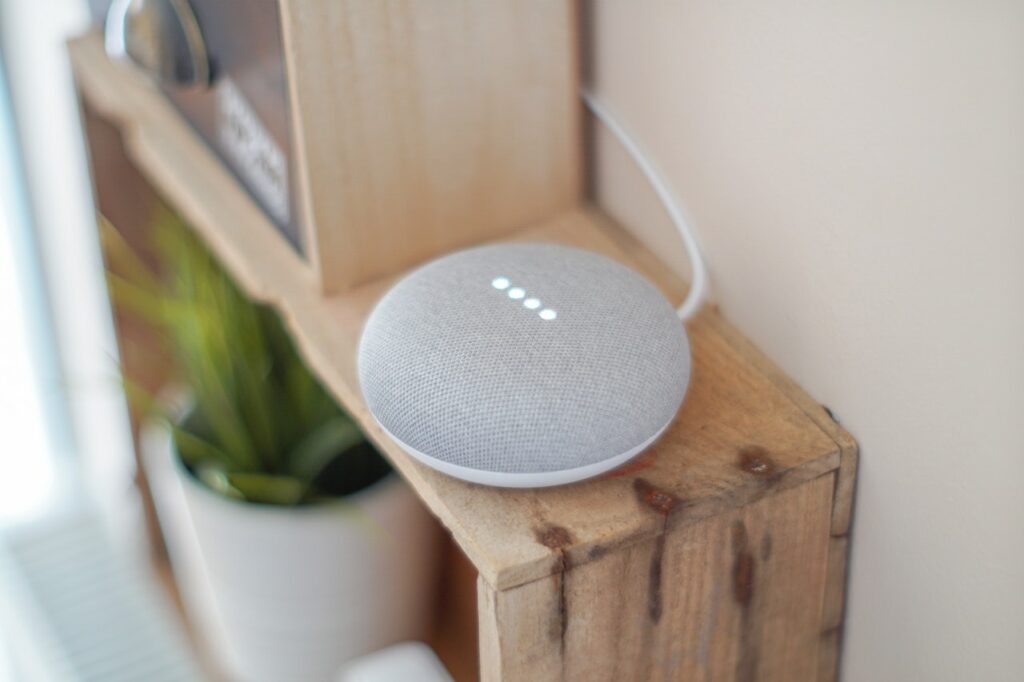This guide is designed to bring your PPC strategy up to date in 2019. Ultimately, it’s about making your ads profitable. You want to make every click count, ensuring you’re driving the right type of person to your site who will eventually convert into a paying customer. Mis-targeted, un-optimised ads generate wasted clicks and cost you money.
So, without further ado, here’s our guide to PPC best practices for 2019.
1. Be clear on your PPC goal
When it comes to PPC advertising, it’s easy to jump straight in. Businesses want to see results and they know that this type of advertising is a great way to get in front of people. However, without a clear goal, results are hard to measure making improvements over time difficult.
Whether you have a new site and you want to see an increase in traffic and sales or you have an established website and want to broaden your audience, choosing a clear goal is integral to any successful PPC campaign.
When setting out your goal(s) be sure to use SMART: Specific, Measurable, achievable, realistic, time-bound. This will help to ensure that your goals are realistic and that you have a clear way to measure them.

2. Make the shift from keywords and focus on your audience
As many an online marketer will tell you, Google ads and PPC ads were once dominated by keywords. Ensuring your ad was seen meant using the right keywords to tell the search engine that it was relevant for a certain search.
Whilst this is still partly true, search engines have become far more audience orientated as they want to ensure the user journey is as seamless as possible. This ‘audience first’ approach means that keywords alone no longer cut it.
When it comes to an audience-first ad strategy, think quality over quantity. Instead of driving lots of traffic to your site based on keywords which may or may not be an exact search match, you focus on those looking for your specific offering.
When taking this approach, data is crucial. Head over to your Google analytics account and take a look at the ‘Audience’ section. Here you’ll find a goldmine of data which tells you about the demographics and behaviour of your customers and website users. By using this information, you’ll be able to refine your ads, helping to achieve a higher conversion rate.
Here’s a handy article on how to understand and use Google Audience data.
3. Stop working in silos and take a ‘multi-channel’ approach.
Paid search and social advertising have been seen as many as separate beasts. There are Google Ad experts, for example, as well as Facebook ad experts. And, whilst it is important to specialise in an area, businesses that fail to join the dots across these two key platforms are missing a trick.

PPC ads on search engines work even better if they are supported by ads on social media. To demonstrate this, let’s put ourselves in a consumer’s shoes. Someone decides they fancy a winter holiday so Googles ‘last minute cheap winter break.’ This returns a paid ad on Google which takes them to a ‘winter breaks’ landing page. After scrolling through on their ipad, they get distracted and turn on the TV.
The following day, whilst on their phone, the same person opens up Facebook. Because this holiday provider has taken a ‘multi-channel’ approach, this potential customer is immediately presented with an ad showing winter breaks and a 20% off discount code.
What’s clever about this is that the holiday provider knows this person is searching for a discount winter break based on their first search. They are therefore more likely to click an ad offering a reduced price.
This multi-channel approach gives far more clout to your PPC ads and means potential customers can be retargeted in a far more complex and strategic way.
4. Ensure you are taking a ‘mobile first’ approach
In 2019, many of us are practically attached to our phones, it’s therefore no surprise that mobile internet usage has soared over the past ten years.Technological advancements have made browsing and shopping online simple for mobile users, meaning we can do much more on the go.
In 2019, 62% of internet traffic comes from mobile users globally, so PPC ads that aren’t tailored to mobile are failing a large audience. When tailoring user experience, it’s important to do your research first. Think about the service you offer and how people would come across your site. Is your product or service something people would generally buy on the go? If you were to search for your product/service would you use your phone?

If your answer to those questions is yes, it’s time to get your mobile strategy sorted. If not, you shouldn’t rule it out completely. Head over to AdWords and look at your data. Here you’ll be able to see how many clicks and conversions come through mobile and desktop.
Remember that if mobile conversions are low, it could be down to your site’s optimisation and that the current mobile user experience is poor.
To start your ad mobile optimisation, you firstly need to tell AdWords that your ads need to be more visible for mobile users. This is where bid optimisation comes in. You change your bid level according to which device you want your ads to be seen on. Here’s a guide on everything you need to know.
Once you’ve adjusted your bid optimisation, think carefully about the wording of your ads. Put yourself in the shoes of a mobile user when reading your ad. Is it succinct? Is there a clear call to action? Is it possible for people to easily call you from the ad? This is especially important for mobile users who may just take that action with having their phone in their hand.
Next, you should focus on your landing page or the page on your site where your ad leads to. If your landing page or website in general is not mobile optimised, users are likely to bounce off and search elsewhere. Remember, in 2019, no one expects to have to pinch the screen to zoom in…
Research by the Huffington Post found that if a site is not mobile optimised 30% of mobile users will abandon their shopping cart and 57% will leave the site if it takes longer than 3 seconds to load.
So, do your own site audit by clicking through one of your PPC ads on mobile and scrutinising the user journey yourself. How long does it take to load? Is the text easy to read? Where is the call-to-action and is it clear and compelling enough for people to click?
If you’re not 100% satisfied, your users won’t be either and you could be missing out on valuable conversions. To help get your mobile landing page fully optimised and ready for mobile users, here’s a useful article from Wordstream.
5. Get optimised for voice
2020 is set to be the ‘year of the voice search’ so it’s vital that your PPC ads are ready. It’s no surprise, given that Alexas and Echos are now commonplace in many people’s homes. Consumers no longer have to lift a finger to search the internet with voice technology on the rise.

Businesses are increasingly taking advantage of this and using voice search in innovative ways. McDonald’s, for example, have recently announced that people can apply for jobs directly through Google Assistant and Alexa! With these kind of advancements, consumers will begin to accept voice search as the norm, so it’s important to tailor your ads accordingly.
Here’s our key tips on optimising your PPC ads for voice:
Use long-tail keywords and natural language
When people voice search, they use more conversational turns of speech. Instead of typing in ‘nail salon Manchester’ they’re more likely to say something like ‘Alexa, where’s the nearest nail salon?’ Words like ‘who’, ‘what’, where’, ‘for’ and ‘how’ are more common on voice search, so it’s important that your keyword selections match up.
Take a look at your keywords and see if there’s anyway you can expand on them. By making your keyword selections more specific, the traffic you generate is more likely to convert.
It’s also important to think about dialect if your ads are localised and any phrases that people are more likely to say when searching by voice. Do this by talking through how someone might search for your product or service. This will help you to uncover any conversational keywords to include.
6. Think local
Voice search tends to be used to find local shops, restaurants and businesses. So, try to focus some of your keywords on local places and landmarks. For example, instead of typing in ‘coffee shop Manchester City Centre’, a voice search may be more like ‘Where is the nearest coffee shop to St Peter’s Square.’
By including landmarks like this, you’re more likely to appear higher in voice search than those who just use town or city names.
7. Make use of ad extensions
Ad extensions provide users with added information about your business. Often, they help you to provide people with more reasons to click your ad over the competition’s. They tend to include reviews, phone numbers and additional links to your site, providing additional information before the user clicks the ad.
Use additional sitelinks to guide potential customers to different areas of your site. For example, the main link will be your homepage and then additional links could lead to limited offers on various landing pages. Therefore, instead of having to navigate your site from the home page, people can click directly to the specific offer or page they’re interested in.
Callout extensions provide a useful way to add more descriptive details in your add. They’re like snippets of additional information which help to compel people to click. Including key USPs like ‘free next day delivery’, ‘free returns’ or ‘shop now pay later’, are key terms which can help to draw potential customers in.
Call extensions allow you to add your contact number so users are able to call directly from the add. They work particularly well for mobile users who can simply tap the phone icon and call without having to actually click through to your site.
Review extensions provide endorsement, showing potential customers that your product or service has been tried and tested by others. Reviews play a key part in consumer buying decisions and if they can see you have an excellent review from looking at your ad, your business will be more desirable to them.

8. Make sure your landing page matches the ad
There’s nothing more frustrating than clicking an ad as a consumer and landing on a page that’s totally irrelevant. This may seem obvious, but it’s surprising just how many businesses still get this wrong.
A common example is directing people to your website’s home page when the ad is advertising a specific product/service. Potential customers don’t want to have to navigate through your site to find the ‘white pair of trainers’ they originally searched for. Always be sure to link directly to the exact product or service you are advertising. This makes the user journey far more streamlined making them more likely to convert.
To sum up
PPC remains one of the most powerful ways to reach your target market online. Like any form of digital marketing, it’s constantly changing so it’s important to adapt accordingly. Ensuring your ads are optimised for mobile and voice is now essential, something that wasn’t even a real factor 10 years ago. By keeping up with technological advances and key advertising trends, you’ll ensure that your ads reach the right people and have the best possible chance of converting.


